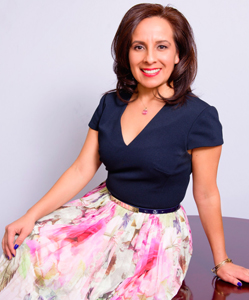Who Reviews a children’s book?
 Knowing that the children’s book you write will pass through the review of many people before it gets published is important and guess what, these are all adults! Don’t forget that parents are the ones that ultimately buy books for their children. You have to make sure that your book passes the “mustard” test by agents, editors, sales representatives, booksellers, librarians, teachers, parents and lastly the children. As each adult reads the book, they are all looking at it with a different point of view. Most of the adults are reviewing the book with the view of how it pertains to their job function. For instance, a bookseller will look at the book with an analytical perspective that comes from “how will this book sell” whereas a parent will look at the book from an educational perspective and ask “what will it do for my child.” As you begin to write your book you should be aware of the reviews that will occur along the way. Don’t lose the mission of telling a great story for the children; however, be mindful of the review process that will occur before your book is finalized.
Knowing that the children’s book you write will pass through the review of many people before it gets published is important and guess what, these are all adults! Don’t forget that parents are the ones that ultimately buy books for their children. You have to make sure that your book passes the “mustard” test by agents, editors, sales representatives, booksellers, librarians, teachers, parents and lastly the children. As each adult reads the book, they are all looking at it with a different point of view. Most of the adults are reviewing the book with the view of how it pertains to their job function. For instance, a bookseller will look at the book with an analytical perspective that comes from “how will this book sell” whereas a parent will look at the book from an educational perspective and ask “what will it do for my child.” As you begin to write your book you should be aware of the reviews that will occur along the way. Don’t lose the mission of telling a great story for the children; however, be mindful of the review process that will occur before your book is finalized.
What do children like to read?
Determining what children like to read is a feat within in itself. As a writer, it is up to you to do the upfront research for your target audience. This means, understanding what it is that makes a child want to pick up a particular book and read it through. There are, of course, all the marketing things that happen to make the book appeal to a child but there are also very fundamental things that children look for in a book. Children like to read about youngsters that are different, about kids winning against adults or even scary things. They also find amusement in things that adults see as crude such as burping and passing gas. Children are also captivated by magical stories or topics where a kid can perform astonishing deeds and come out the hero.
As you create your story, your characters should be memorable to a child. What makes a character memorable and great is that the writer captures the essence of how the character sees and interacts with the world. A writer needs to make sure he is providing all the important personality traits of the character to the reader; the expressions, the special things that pertain to that person, the behaviors, the actions and the words. Having characters like this will create those magical stories that children love. As you write your book, make sure you really understand the likes and dislikes of your target audience.
Ideas for Writing a Children’s Book
You may have decided to write a children’s book because of an idea you had brewing for a long time, most people do. This is probably a good place to start as any; however, as you begin to understand the children’s book market it’s possible that this idea may not work or you may find that further research is needed to make this idea come to life. As you begin to research your idea and the children’s book market, you will likely come up with a list of many new topics about which you could write. Make sure you continue to develop and save this list for future use. If you plan on being successful in the children’s book market you’ll need lots of ideas for new books. As you start to develop this list:
- Begin by writing down your own experiences as a child. List things that surprised or scared you, things that made you feel good or bad as a child, things that overwhelmed or excited you and reflect on those moments that were special and how you felt.
- Start observing the children around you and see what interests them as well as the material they are reading. Go to a library or bookstore and observe the books children are pulling off the shelf to review.
- Talk to bookstore owners and to find out what books are selling best in the market. Review books that have made it on best seller’s lists. Talk to your local librarian and find out what books are being checked out by children. This will begin to give you an idea of the more popular reads.
- Immerse yourself into children’s literature and begin to explore the different authors and their writing. This will begin to trigger other ideas as you continue to explore.
- Read up on the classics and see what worked for those particular books; however, be mindful that current book trends are just as important.
What are publishers looking for in a children’s book?
 Having a good understanding of what a publisher is looking for is very crucial to getting your book published. You may never know exactly how each of the publishing houses handles a particular process unless you have worked there but it’s still important to have a general understanding of the industry as a whole. Knowing what a publishing house is looking for will be beneficial for you and for them. You can then focus on writing projects that may have a chance of getting published and you won’t waste an editor’s time with bad material that’s thrown into the reject pile.
Having a good understanding of what a publisher is looking for is very crucial to getting your book published. You may never know exactly how each of the publishing houses handles a particular process unless you have worked there but it’s still important to have a general understanding of the industry as a whole. Knowing what a publishing house is looking for will be beneficial for you and for them. You can then focus on writing projects that may have a chance of getting published and you won’t waste an editor’s time with bad material that’s thrown into the reject pile.
Be aware of books that editors don’t want to see. Books that are timely and based on a specific event are not very useful. Once the manuscript is accepted, it may take up to two years to get it published and out the door to bookstores and readers. If the event has passed then the timing would be off and editors won’t take a chance on these types of books. Just remember that any topics that are “hot” for the moment and “cool” in the next are probably not going to be reviewed. Books that are tied to seasonal type characters (Santa Claus) or events (Halloween) are not high on the priority list for editors because they sell only once a year and are not lucrative for the publishing house. Books that personify things such as “Penelope the Pencil” who teaches children to write are not very popular with the big publishing houses. Some of the smaller presses may take these books on but are not high on their list either. Be careful with books that teach or preach. Editors and children don’t appreciate these types of books. Remember to focus on telling the story rather than on giving a message. If you have a stack of books that you’ve already written as a series, you may be wasting your time if you haven’t sold the first one yet. Very few publishing houses will sign up an author for multiple books unless the author is well-known.
Can you make money writing children’s books?
If you want to get into the business of writing children’s books solely because you want to make a lot of money, then you are probably in the wrong profession. It can sometimes take years to get your first book published so unless you have another income, this may not be the best choice. You can make money writing articles for magazines or writing for the local news or newspapers but this is a totally different market. If you are an illustrator, you can possibly make money from selling your work and skill as an artist; however, even that is going to take some footwork and persistence. If, however, you want to write a children’s book because you just simply like this genre and you enjoy writing, then you are probably in the right place and should continue. Success usually comes to those that do what they enjoy.
Once you sign a contract with a large publishing house, you may get a nice advance and then you’ll most likely receive royalties (if written in the contract and if your book sells). Your chance of getting your work accepted by a smaller publishing house is higher but they don’t usually pay as much as some of the big publishing houses. Justine Larbalestier wrote a great article on how much money a first-time author can expect. http://justinelarbalestier.com/blog/2004/12/24/average-first-novel-advances/
Although the data used for this article was between 1962 and 2004, the concept and monies probably haven’t changed a whole lot. This information is not meant to discourage you but rather to give you some insight into the world of writing and book publishing.
Keep in mind that the publishing business is quickly evolving with all the current technology available today. As a result, ebooks and Print on Demand (POD) technologies are taking the industry by storm and no one really knows how this will end up affecting the publishing industry as a whole. It’s probably a good idea to keep tabs on this new technology and the direction it will take. Authors that couldn’t publish their work through standard publishing houses are now able to use this technology to their advantage and some are finding success going this route.
Illustrators are a big part of the children’s writing industry and they usually get paid half of the money on your book for their contribution to the art work. It is significant to mention that publishers hire their own illustrators so if you are currently working with a freelance illustrator keep this in mind. It is almost always not a good idea to send both your manuscript and illustrations together to an editor unless they ask for it. Editors only want to see the manuscript as they don’t need illustrations to make a decision. If, however, you are both an illustrator and an author and you want to feature your work, send your illustrations to the Art Director and your manuscript to the editor. Read more under illustrators.
Don’t discount becoming a well-known author if you have talent and persistence. If you reach this goal it could be extremely lucrative. Before you head down this dream-path, be realistic in knowing that achieving this goal is going to take a lot of hard work and commitment. It can be done but know that if you don’t fail you can’t succeed and that you will more than likely receive many rejection notices before you reach your goal. Remember that even well-known authors received rejection notices before they sold their first book, and if you love writing you too can be just as successful.
Children’s Writer’s & Illustrator’s Market
Before embarking on your quest to write a children’s book or after you have written and polished your manuscript to perfection, you should acquire the Children’s Writer’s & Illustrator’s Market (CWIM) guide. This is an essential tool if you want to market and be successful in selling your manuscript to publishers. This necessary guide contains publisher contact information, a description of what they want and need and also payment information.
As in any business or profession, you have to research and find out the essential key elements to enhance your chances in a particular market. This book will help you gain knowledge about the industry and the publishers who will open the door to getting your manuscript published.




